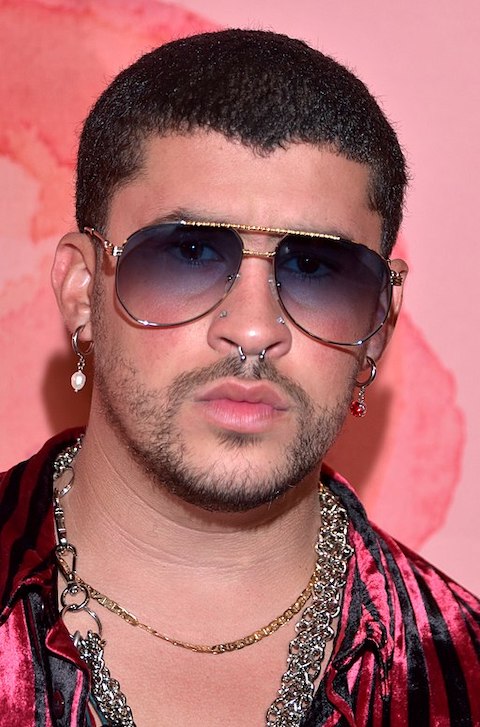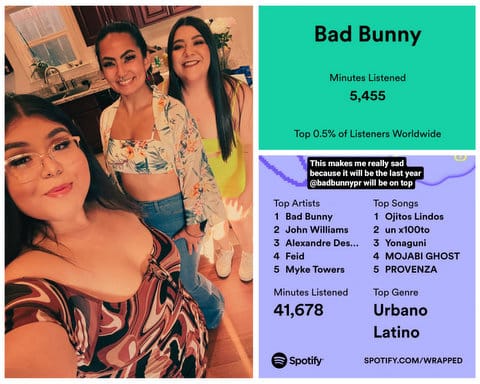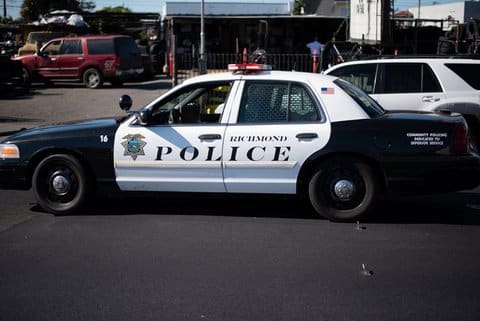
14 Oct Bad Bunny’s Super Bowl Show Is More Than Music. It’s Recognition.

(Photo by Glenn Francis/www.PacificProDigital.com)
Commentary, Yaslin Rodriguez
When the NFL announced that Bad Bunny would headline the 2026 Super Bowl halftime show, fans didn’t just celebrate; they felt seen. For millions of young Latinos, it is not just music. It is recognition. It is validation. It is pride.
This is more than a performance. It is a cultural moment.
While I do not remember the first time I heard Bad Bunny’s music, I will always remember the first song I heard. It was “MIA,” featuring Drake. I remember the feeling I get from listening to that song: windows down, hair flying, the kind of joy that feels like a summer night. It felt free. And, for me, it was not the fact that it was Bad Bunny, or that it was Drake that made it special — it was the fact that I enjoyed listening to music in Spanish.
At the time, I was attending a primarily white and Asian elementary school, where simply the way I looked stood out. And even though one would have never guessed, all I could dream about was fitting in. I hated when my dad played corridos, or any of his Hispanic music; it embarrassed me. But hearing Bad Bunny felt like something new. It wasn’t the kind of music that made me want to shrink myself. It made me want to roll the windows down. It made Spanish feel cool. It made me feel seen.
Bad Bunny has become a global superstar, something extraordinary for an artist who rarely sings in English. In doing so, he has rewritten the rules of mainstream success. He refuses to compromise his sound or message to fit into a mostly English-speaking industry. His presence on one of the biggest stages in American entertainment highlights not only his influence but also the growing visibility of Hispanic culture and identity in the U.S.
The Super Bowl appearance is especially exciting given his recent choices. To promote his latest album, “Debí Tirar Más Fotos,” he first performed a 30-show residency in his native Puerto Rico. Then, in November, he’ll kick off a world tour with dates in 20 countries across Latin America, Europe, Asia and Australia — but none in the United States.
(Ed. note: Puerto Rico is a self-governing, unincorporated territory of the United States, making it simultaneously a part of and separate from the U.S.)
That is exactly what makes this moment different.
In an interview with CNN, he said, “But there was the issue that … ICE could be outside (my concert venue). And it’s something that we were talking about and very concerned about.” His honesty on such issues underscores his awareness of the realities many Latino fans face. Fans showing up to his concerts could be detained by ICE, a prevalent issue in the United States right now.
And many are affected by this. According to a new analysis by the Latino GDP Project from UCLA and Cal Lutheran, one out of every five people in the U.S. is now Latino. The study, based on 2024 Census Bureau data, found an increase of more than 2 million people since the previous year, bringing the total to over 68 million nationwide. It’s fitting that one of the biggest stages in American entertainment finally reflects that reality.
In that light, Bad Bunny’s Super Bowl performance feels like more than entertainment; it’s a reflection of America’s evolving identity, and a statement about Hispanic heritage, in light of everything that is currently happening. Bad Bunny feels like pride.
Sure, Shakira and Jennifer Lopez have headlined the Super Bowl before, but Bad Bunny represents something new. He is not crossing over to meet American audiences; he is meeting them exactly where he is. He represents cultural pride: Spanish, in his own style, with no need to translate. That in itself is powerful and sends a message that success does not have to mean assimilation. It means showing up authentically, and proving that that is enough.
For many Latinos, and for many of his fans in general, he is more than an artist; he is a symbol of authenticity. From his rise to fame on SoundCloud, to being No. 1 on the global Billboard multiple times, he has stayed true to his roots and to his identity. Not only that, but he also breaks social norms: painting his nails, performing in skirts, and calling out toxic masculinity. His confidence and pride put together inspires audiences and has given him the platform he has today.
As anticipation builds, fans are already imagining what his halftime show might look like: a celebration of Puerto Rican culture, a statement about American society, or just a setlist packed with the hits that defined the last decade. Whatever he brings to the stage, it’s clear that this performance will mark more than just a career milestone. It’ll be a reflection of a country whose culture and identity continues to evolve.





No Comments